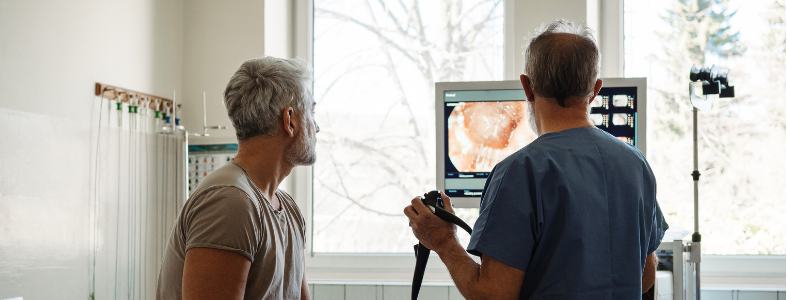
Part 2: Stress Is Stress: When Health Fears and Performance Pressure Feel the Same
Part 2: Stress Is Stress:
When Health Fears and Performance Pressure Feel the Same
By James Porter
Not long before stepping on stage to sing New York, New York at a local cabaret theatre, I was navigating an entirely different kind of pressure. As I shared in Part 1 of this blog, that performance—and the health scare that preceded it—highlighted how performance anxiety isn't limited to actors or musicians; it can affect anyone facing high-stakes moments, from boardrooms, to hospital waiting rooms.
It started with a routine PSA test, followed by a 4K score that raised more concern, then an MRI, and finally an invasive prostate biopsy. At every stage, the signs pointed toward the possibility of cancer—just enough to keep me worried, but not definitive enough to offer any clarity.
When the results finally came in—no confirmed cancer, just ongoing watchful waiting—I felt the kind of relief that makes your shoulders drop and your breath finally deepen. I turned to my wife and said, “I got my life back.”
Fast forward a few weeks, and I found myself saying the very same thing after my cabaret performance. One was a potentially life-altering health crisis. The other? A three-minute song. And yet, my mind and body responded to both with the same intensity of stress, worry, and emotional tension.
What gives?
This experience crystallized something I’ve known for years but had never felt so viscerally: your nervous system doesn’t always know the difference between real danger and perceived danger. Whether you’re waiting for medical results or about to walk on stage, your brain activates the same ancient alarm system.
When we talk about “fight or flight,” we usually associate it with physical threats—like being chased by a tiger. But in modern life, stressors are rarely physical. They're emotional, psychological, and social. A delayed diagnosis. A major presentation. A big performance. A tough conversation. And yet, our stress response kicks in just the same: heart pounding, breath shortening, muscles tensing.
In my case, the uncertainty of the biopsy results was deeply destabilizing. But so was the build-up to singing live in front of 100 people. During both experiences, I found myself preoccupied with the unknown: What will happen next? Will I fail? Will this go badly? The “what ifs” spun endlessly.
And those “what ifs” are at the heart of both health-related anxiety and performance anxiety. They represent our mind’s attempt to predict and control the future—something it’s never been very good at. Instead of staying in the present, we leap ahead to imagined disasters. And whether those fears are about survival or social embarrassment, they trigger the same cascade of stress hormones.
What’s interesting is that both experiences—waiting for medical answers and preparing for a performance—require us to endure uncertainty. And for many people, uncertainty is the hardest stressor of all. It offers no clear resolution, no tidy action step. Just waiting, wondering, and wrestling with our thoughts.
But it’s also where growth happens.
When my doctor finally recommended watchful waiting, I realized I’d need to get more comfortable living in that uncertain space—not knowing for sure what’s next, but also not letting that uncertainty consume me. Similarly, walking out on stage required surrendering to the moment: trusting the preparation, breathing through the nerves, and being willing to not control every outcome.
For trainers, EAP counselors, and wellness professionals, this insight is key. We often help others deal with the stress of uncertainty—whether it’s job insecurity, a family crisis, or a looming presentation. Helping people see that their body’s reaction to these events is normal can reduce the added layer of shame or confusion that often accompanies anxiety.
The point isn’t to eliminate stress altogether. That’s neither possible nor desirable. The goal is to learn how to ride the wave of stress without letting it drown you.
In the next and final post, I’ll share ten tips for doing just that—whether your stage is a theatre, a conference room, or a hospital waiting room.
For now, remember this: just because a threat is imagined doesn’t mean the stress is imaginary. Your feelings are real, and so is the power you have to respond to them with awareness, skill, and compassion.




Erica Tuminski
Author